Middle Devonian
The Penn Dixie site is an abandoned quarry previously mined by a cement company of the same name.
The site is located in Blasdell, NY which is very close to Buffalo.
The site is now owned and conserved by the Hamburg Natural History Society.
The site is famous for trilobites but a wide range of Devonian marine fauna is present.
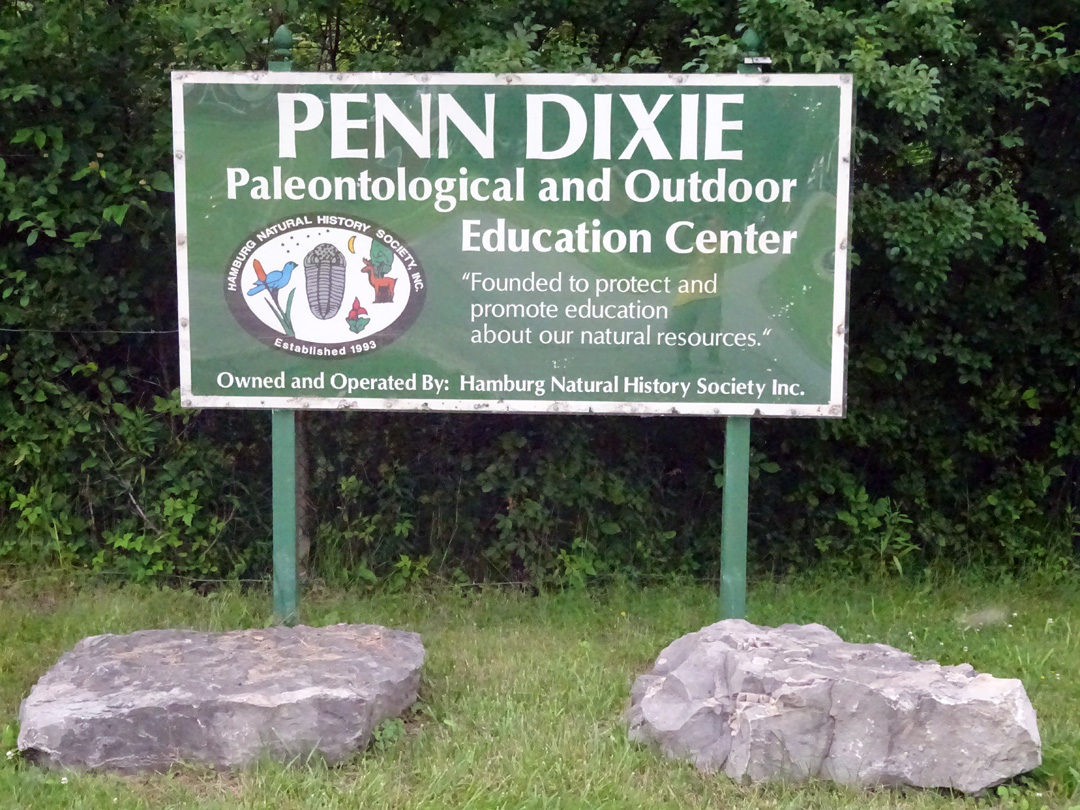
Penn Dixie Site
Access is free to members and is available to the public for a pittance of $7 per person.
All the information you need is found on their website --> Penn Dixie
I purchased a one year individual membership for $25 to support the cause.
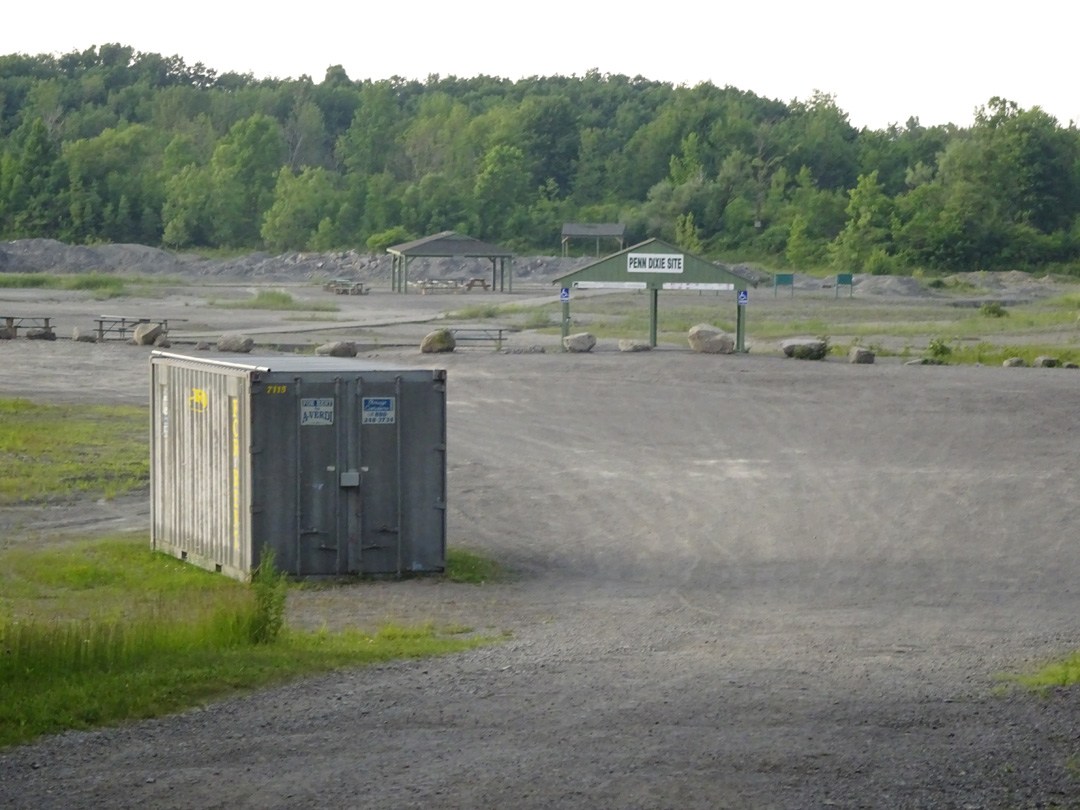
View of the site
The site exposed layers of the Middle Devonian Windom Shale. To the left is the pit area and to the right are spoil piles.
The entire site is very accessible. You can keep everything that you find.
The Penn Dixie site has no facilities other than picnic tables and a port-a-potty.
There are stores to the east on Big Tree Road past the traffic circle.
Be prepared for the weather, whatever that might be.

The Pit Area
The pit area exposes the trilobite layer. The floor of the pit is covered with the discards of years of splitting the hard layer.
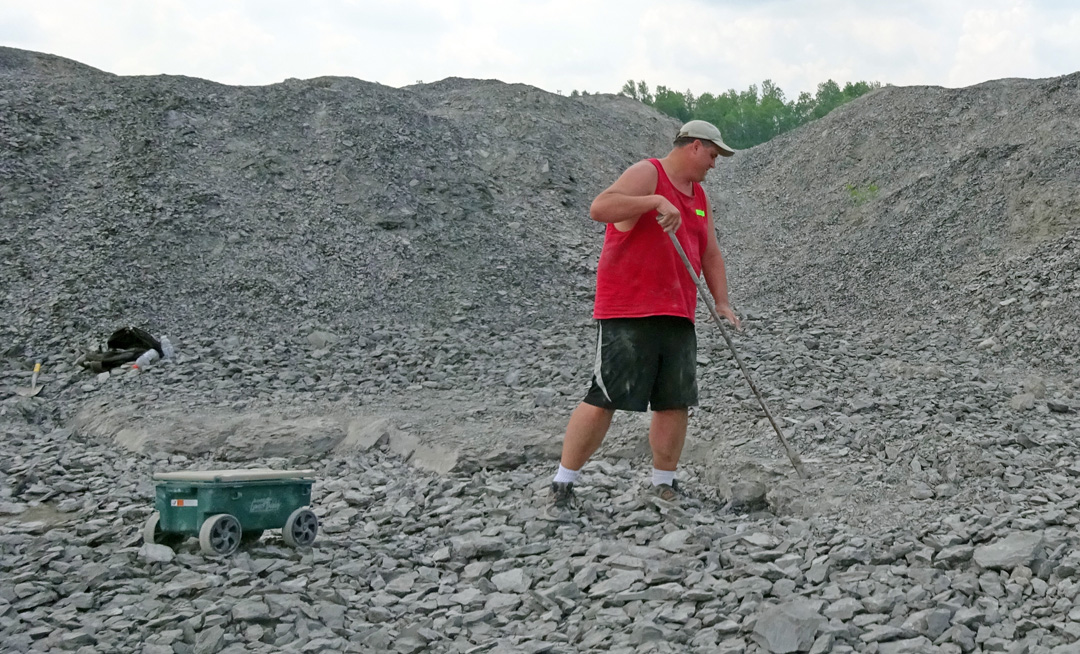
The Trilobite Layer
The best of the trilobites are found in a solid rock layer about 8" thick.
There can be trilobites anywhere throughout the layer. Chipping away at the layer, working downwards is an effective strategy.
This fellow found several 1-2" trilobites in the small are where he was working.
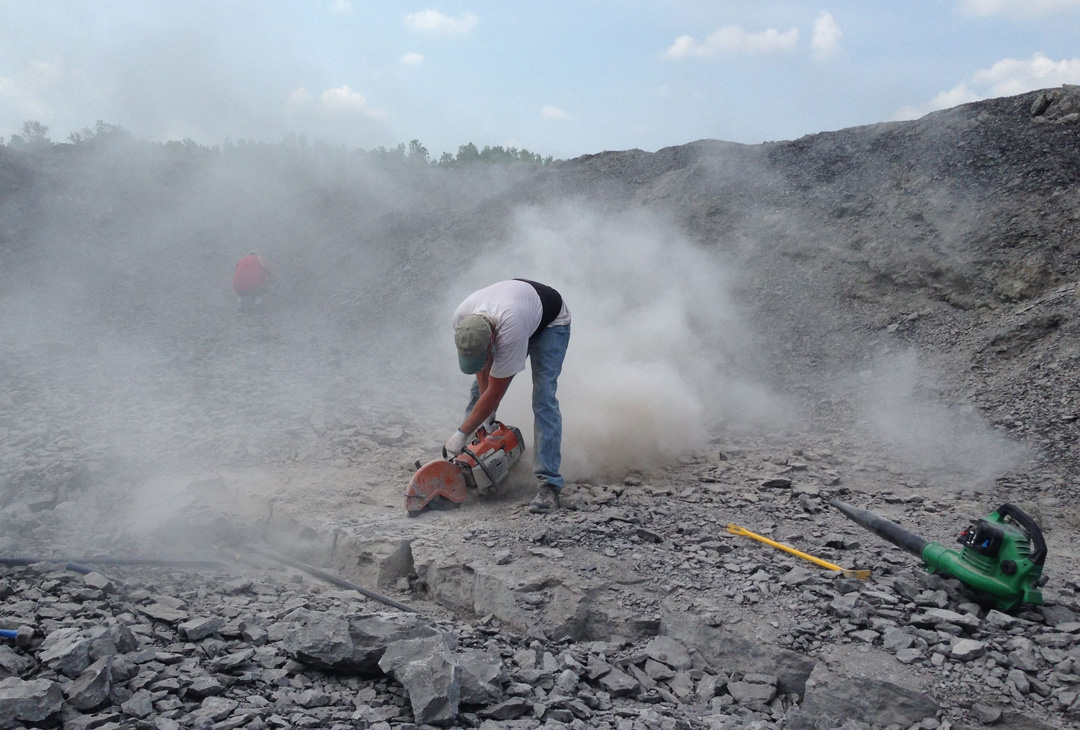
No messing around...
I met some Canadians who brought in a rock saw to cut up some sections of the layer.
Cut blocks in the morning....
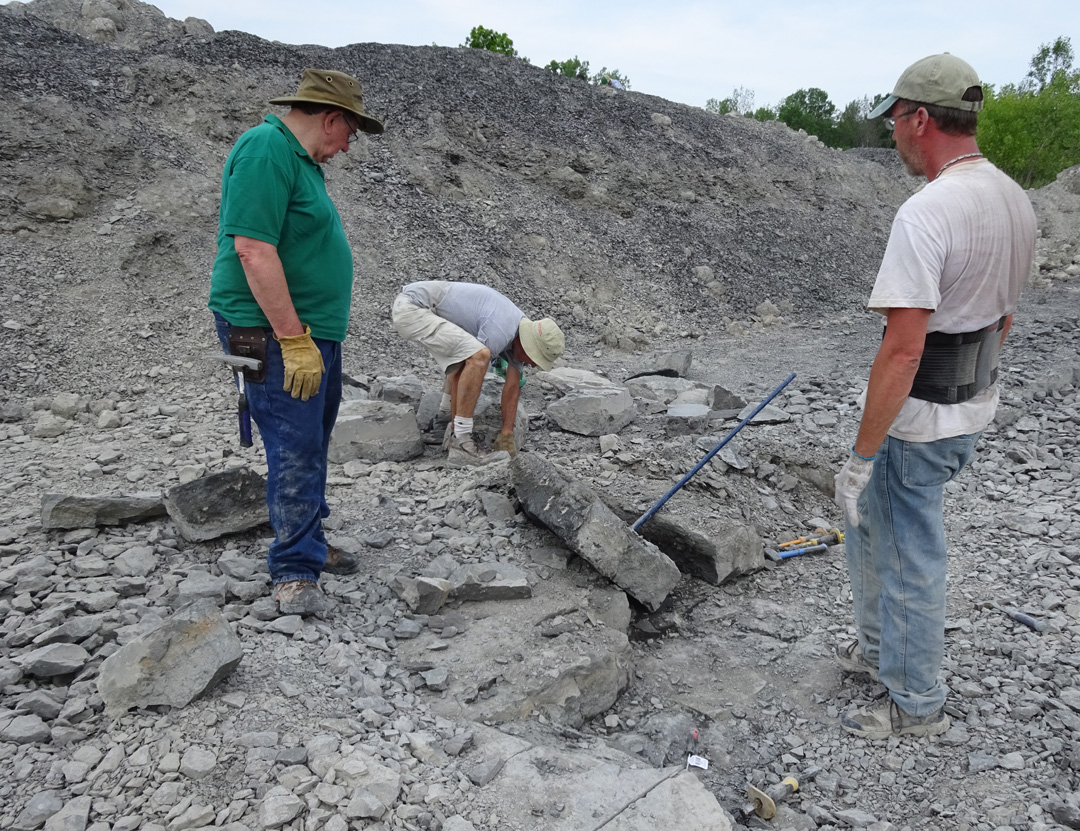
Cutting blocks for splitting
... and split them all afternoon!
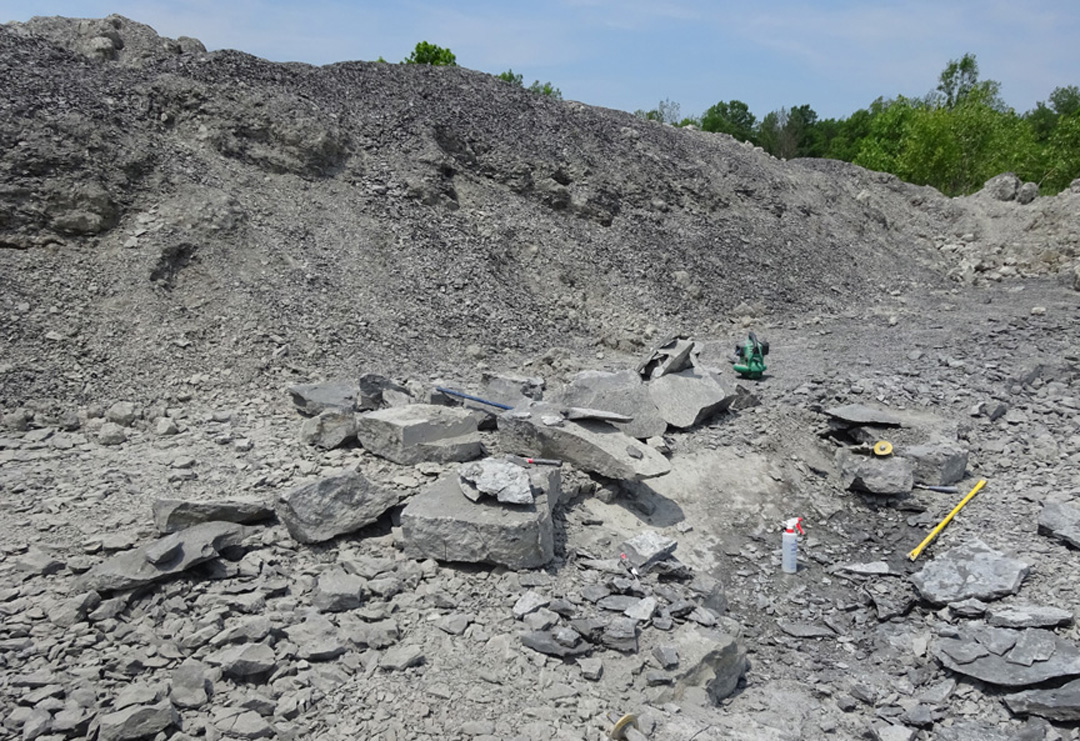
The Pile
This is the pile of sections we cut and removed from the trilobite layer.
The piece de resistance is to find multiple trilobites on a single slab.
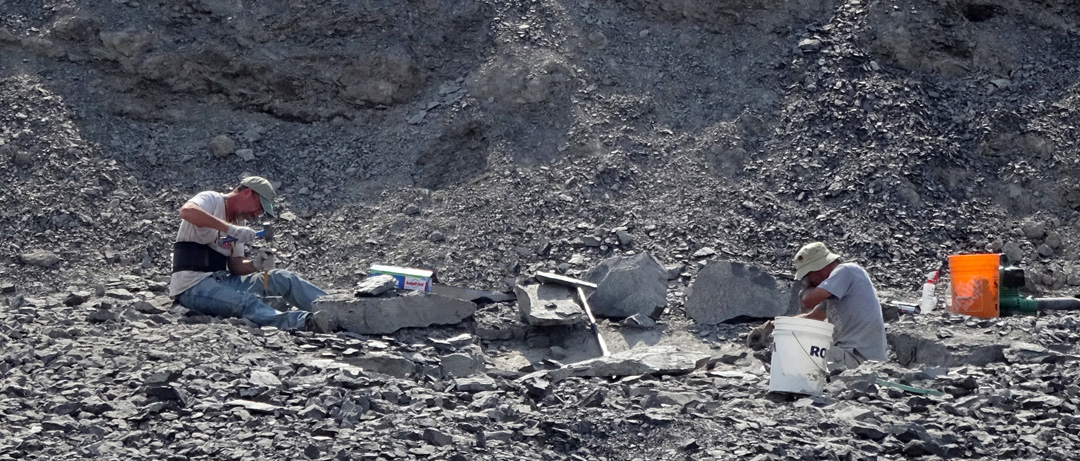
Splitting the blocks with Jim and Malcolm
There were plenty of blocks to go around and all of us found some trilobites but no obvious "multi" plates.
The Canadians save up lots of raw material for preparation during the winter months.
This method is the way to acquire plates with multiple bugs but it is not the only way to find good quality trilobites.
I found a number of examples by chipping off the top inch or two of the hard layer.
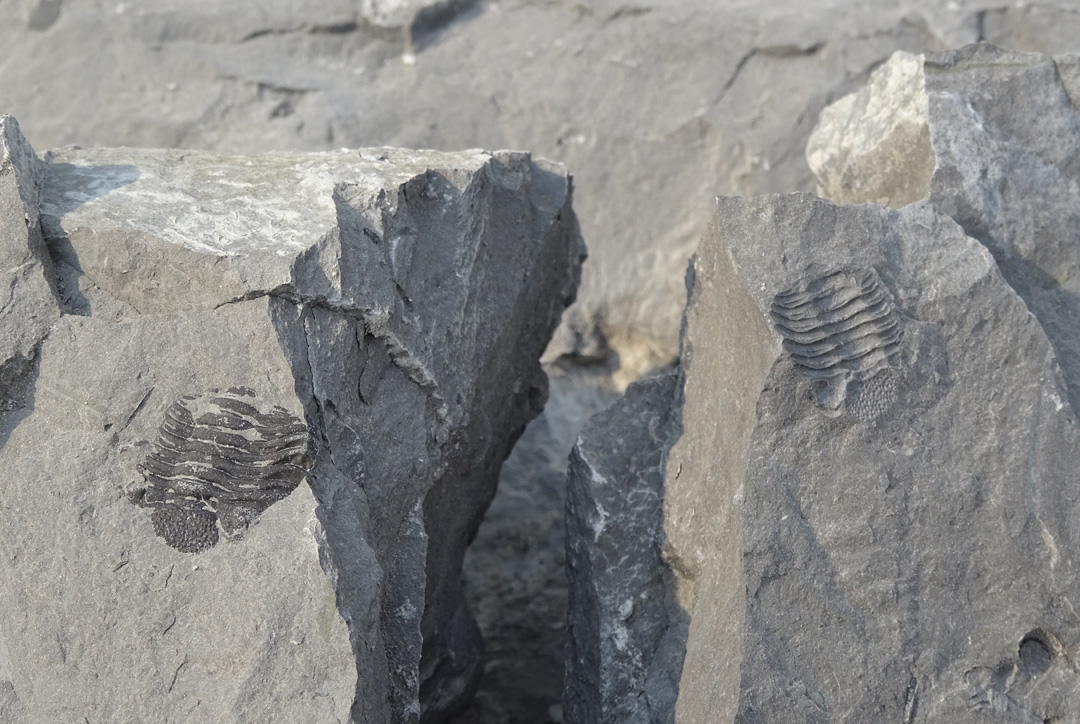
Example of Trilobite in Matrix
It was rare for one to pop out clean out of the matrix, so preparation at home is the best methodology.
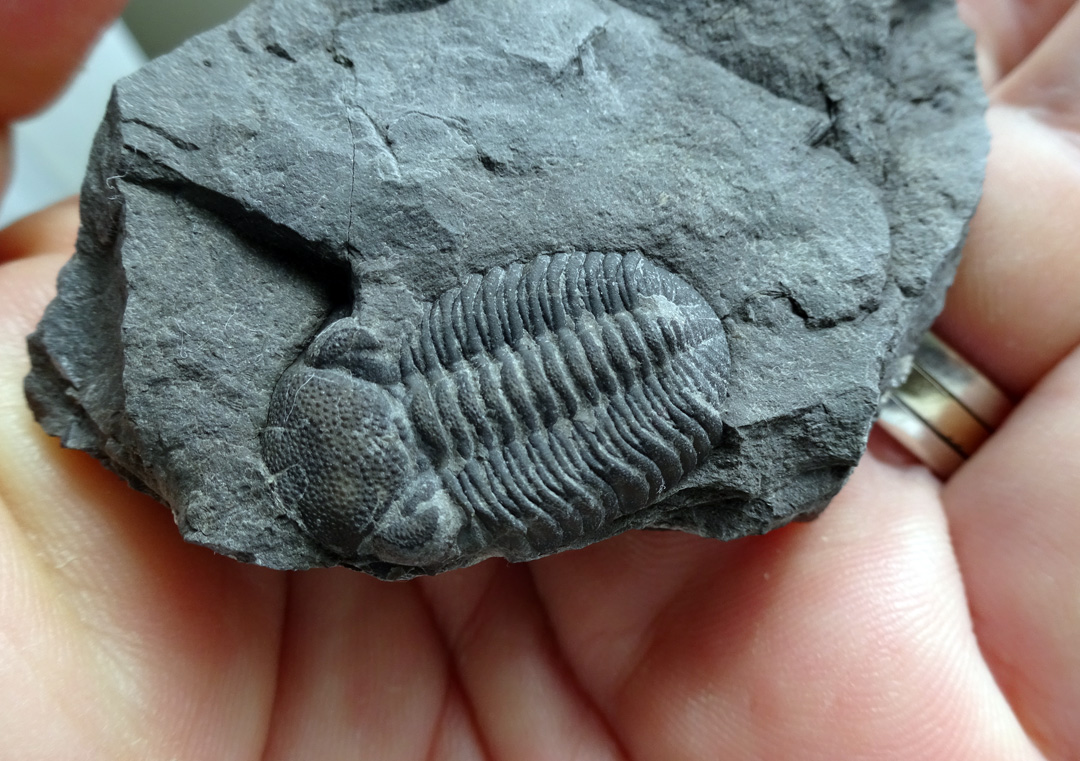
Eldredgeops Rana
This small one (25mm) came out pretty clean.
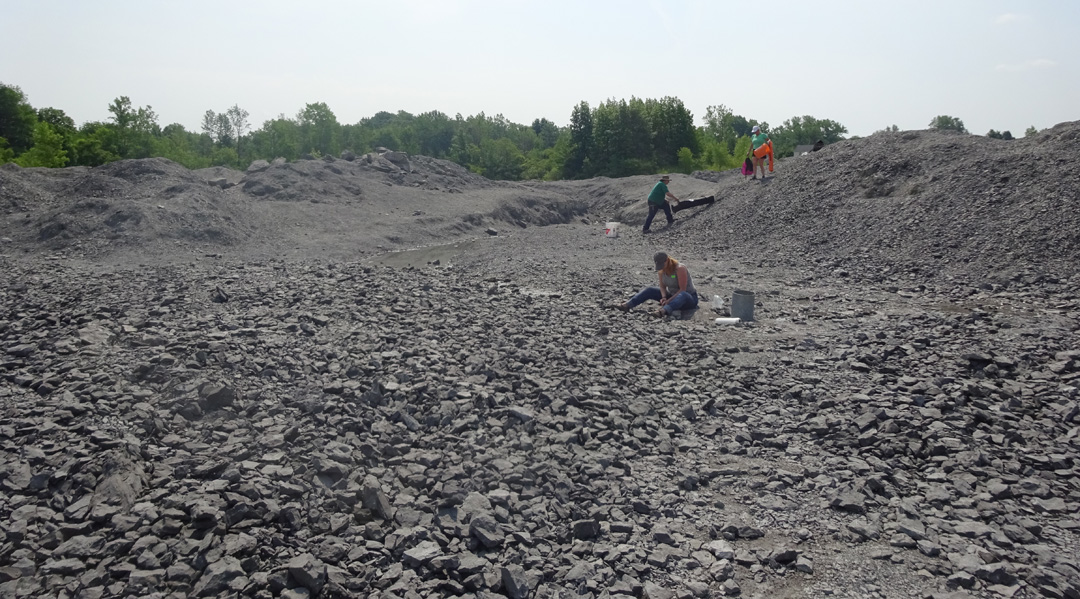
Remnants of Splitting
Another successful strategy is to simple sit down and split the discards of other peoples' efforts.
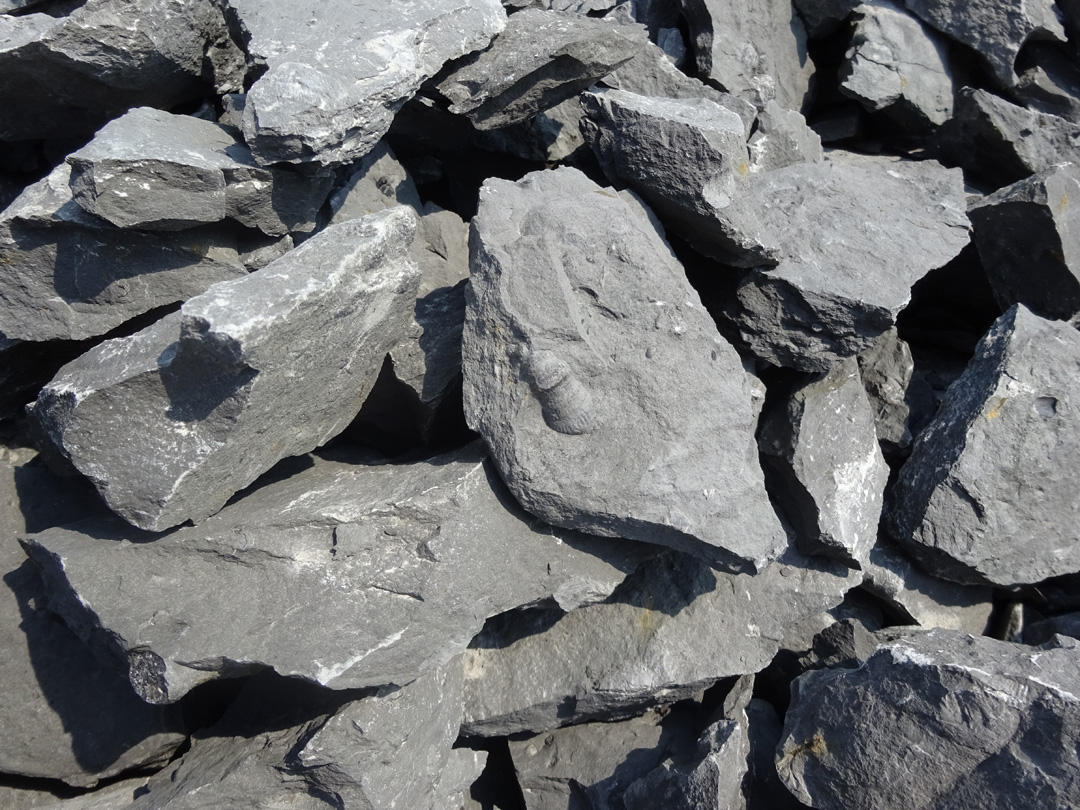
Typical Discard
There can be trilobites, gastropods, corals and brachiopods in any of the shards.
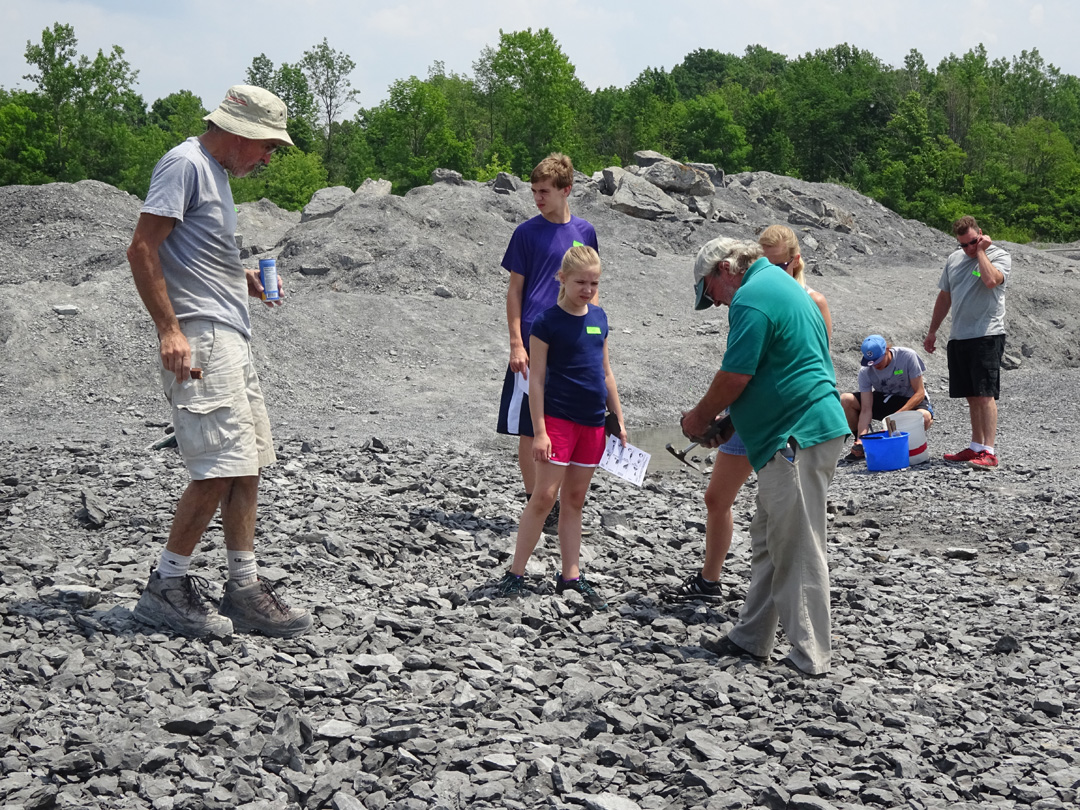
Kids do well here
The tools of choice are a 2.5 lb. sledge and a heavy duty chisel.
Several of the kids found enrolled trilobites while splitting the discards.
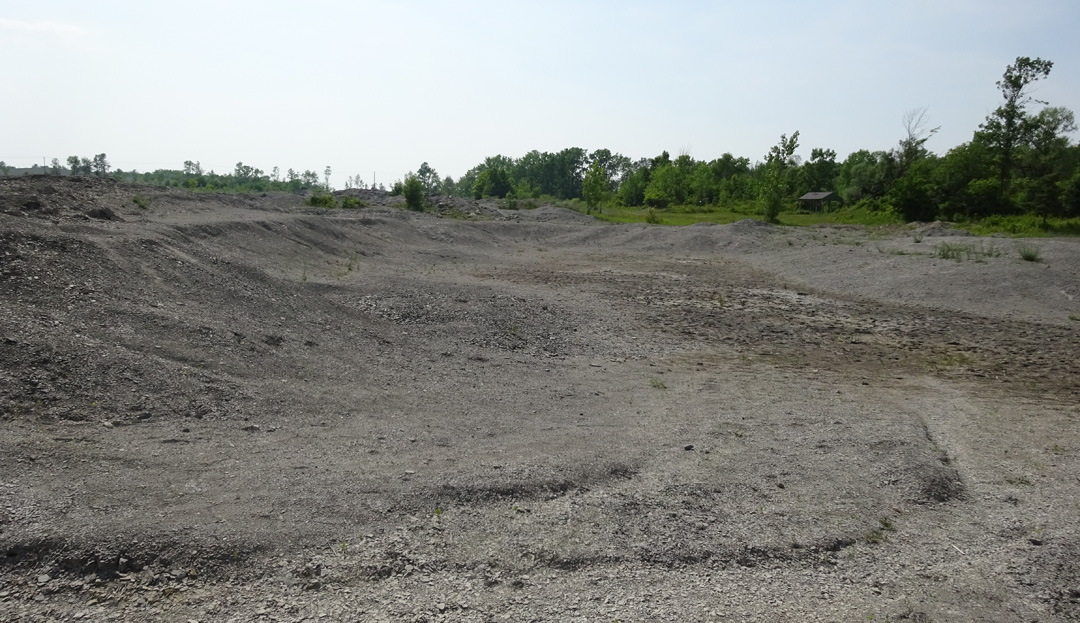
Spoil Piles
The majority of the site is covered with spoils from the mining operation.
The piles are chock full of fossils including crinoid stems, brachiopods, corals, byrozoans and of course - trilobites.
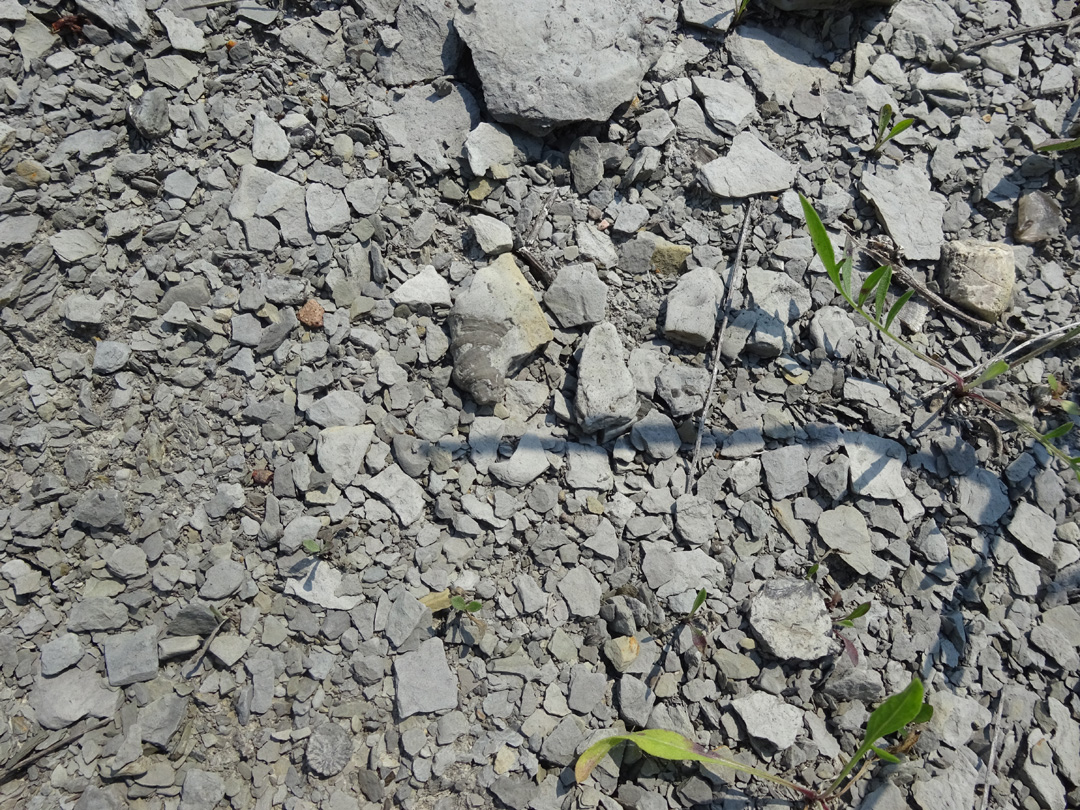
Typical surface of the Spoil Piles
A food strategy here is to simply sit down in a spot and let your eyes adjust to seeing the fossils
hiding amongst the rocks. A small screwdriver or pocket knife is handy but not required.
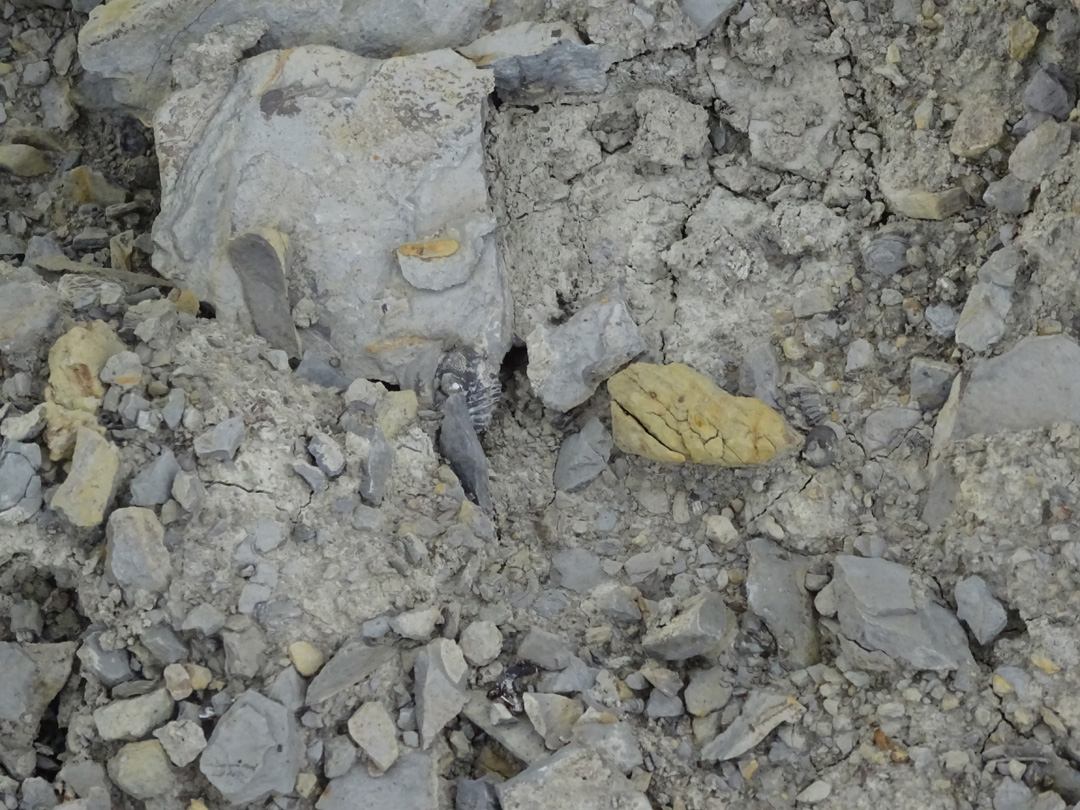
Enrolled Trilobite
I found this trilobite in spoil piles with about 15 minutes.
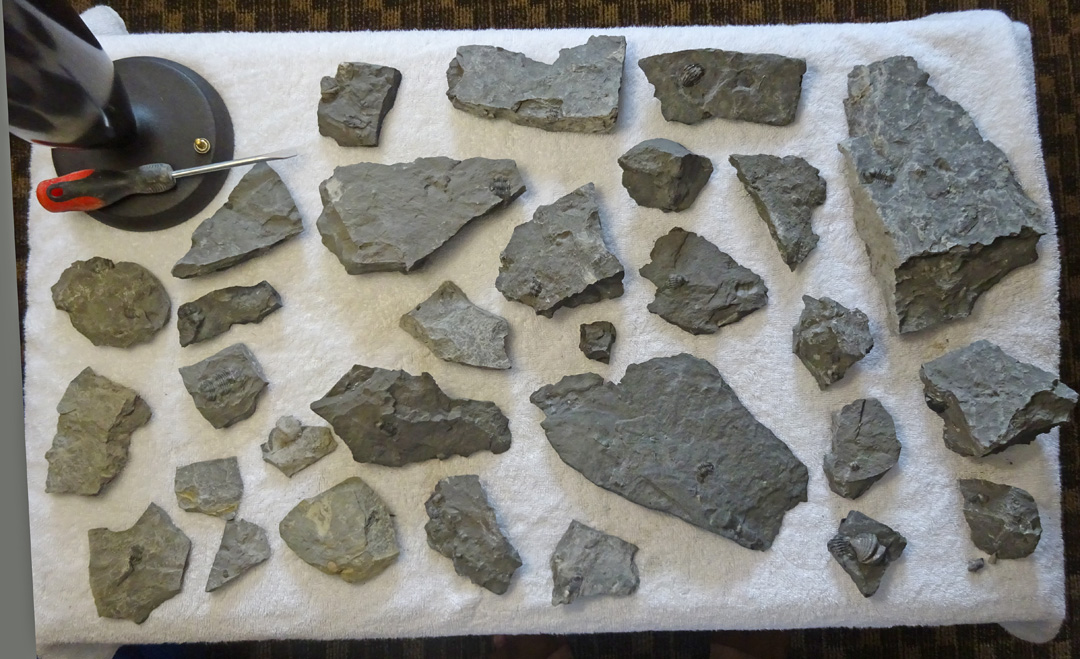
Homework!
These are the raw trilobite slabs I chipped out of the blocks. Homework for me!
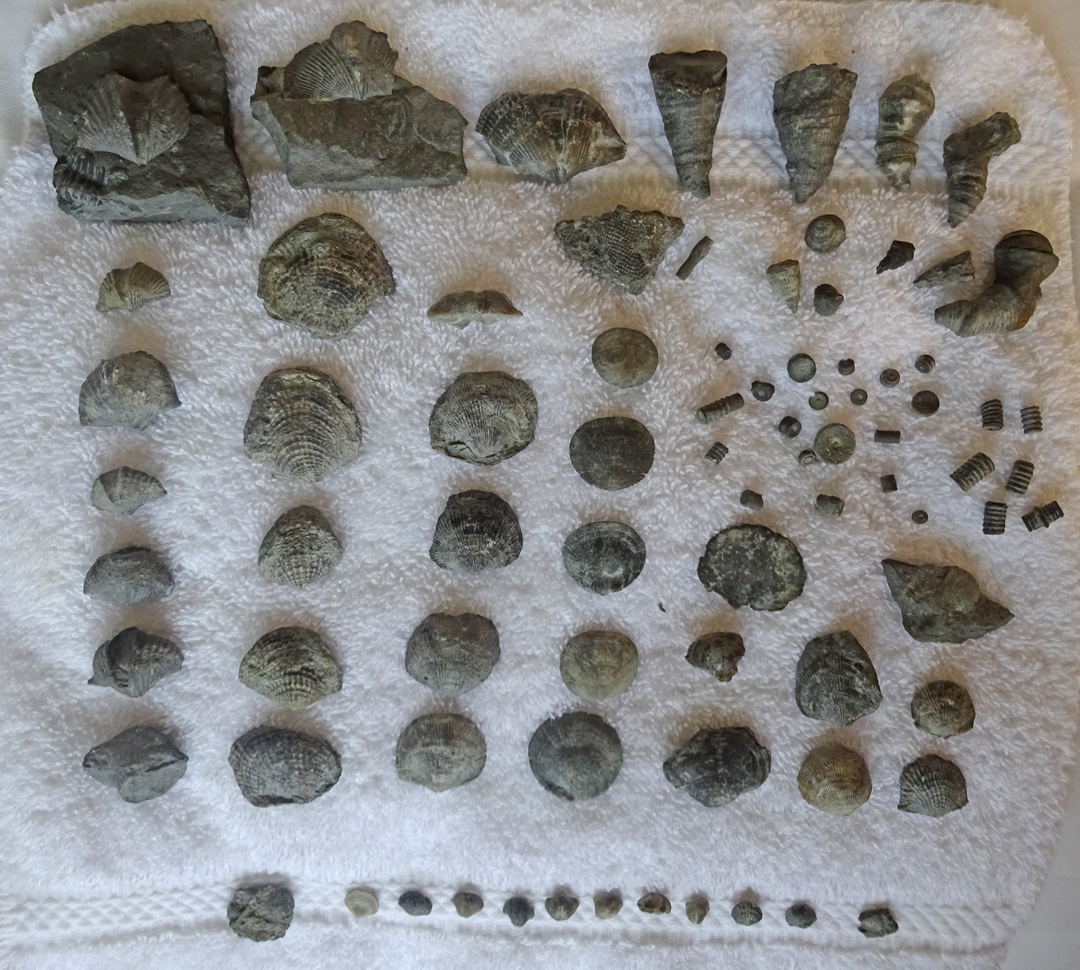
Other Devonian Fauna
There is a wide range of fauna beyond the trilobites here. At least 8 species of brachiopods,
several species of coral and crinoids as well as bits and pieces of byrozoans.
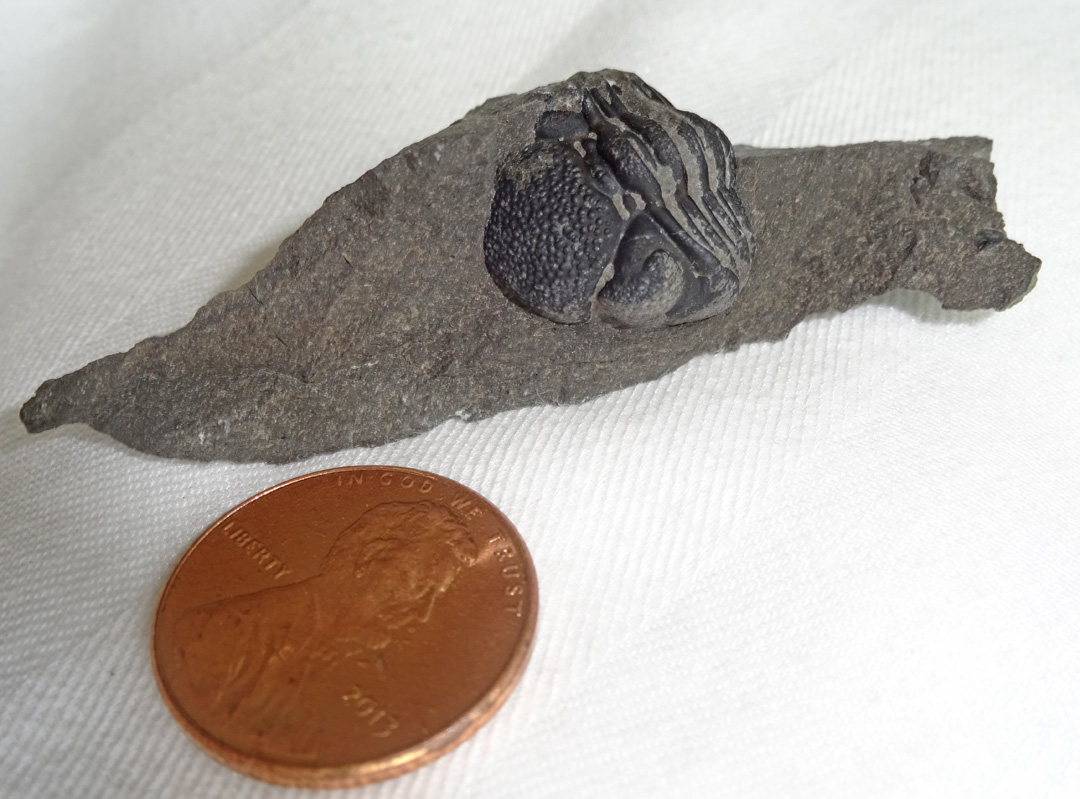
Enrolled Eldredgeops
One of the nicer "rollers" I found in the trilobite layer.
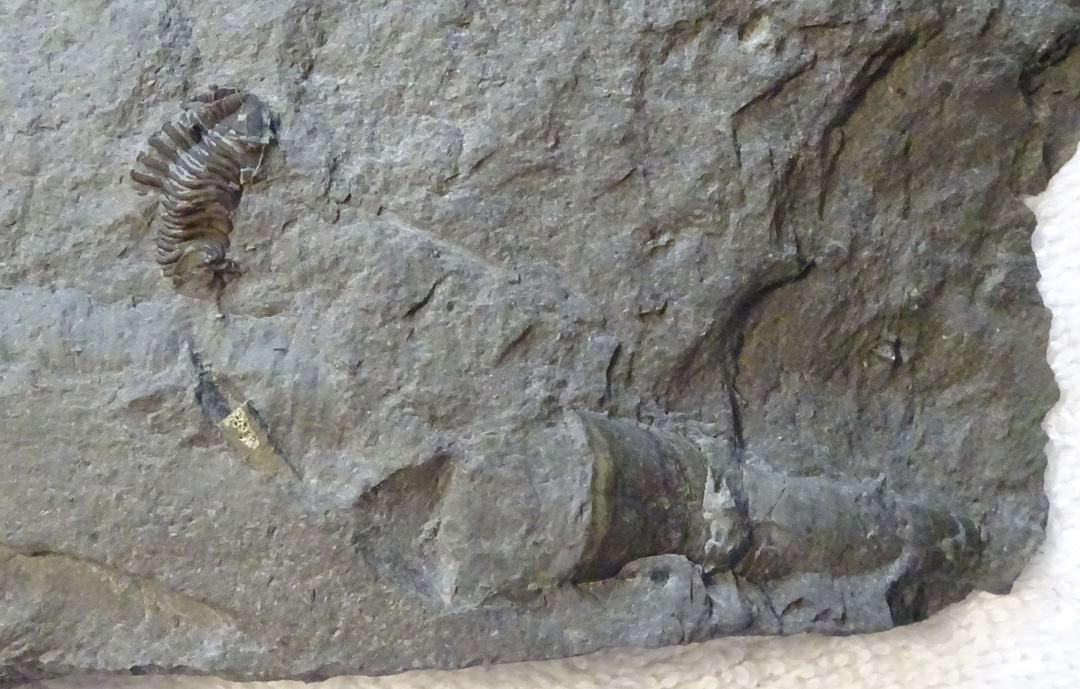
Nautiloid and Trilobite
This appears to be an orthoconic nautiloid along with a fragmentary trilobite.
This one goes home from some prep work.

TNG
My thanks to Malcolm and Jim for the great company and experience!
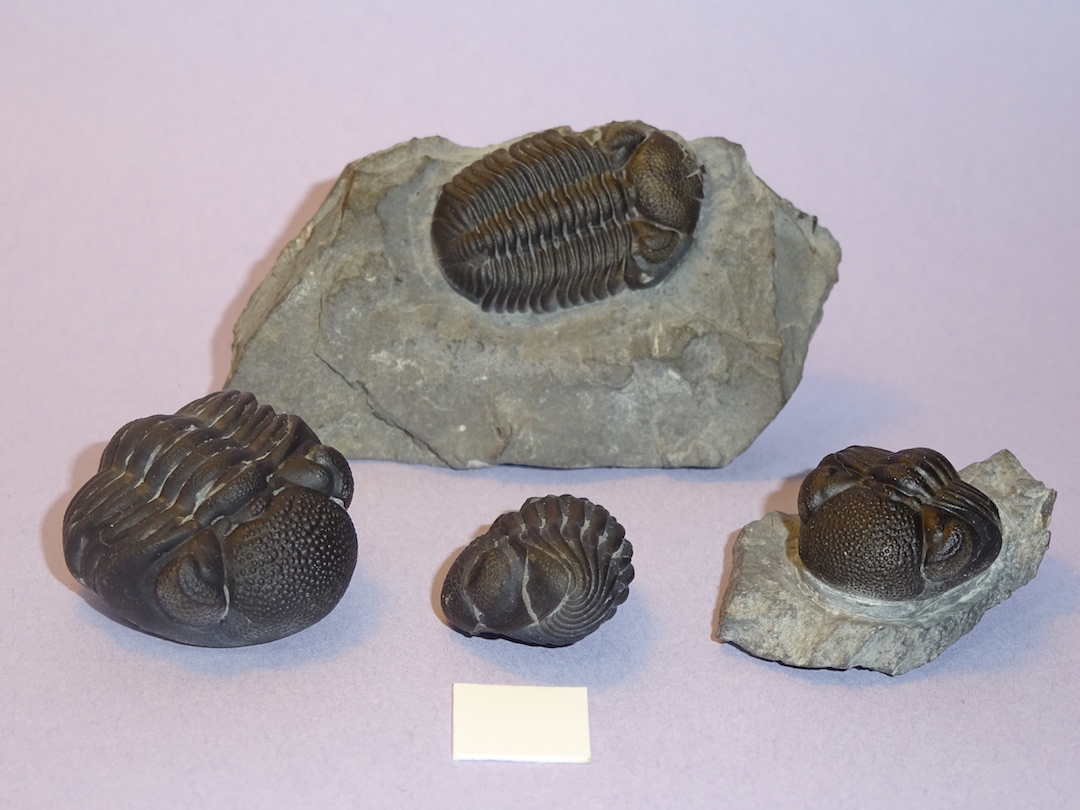
Trilobites after Prep
[Other Sites ] [ Fossil Page ] [ Home ]